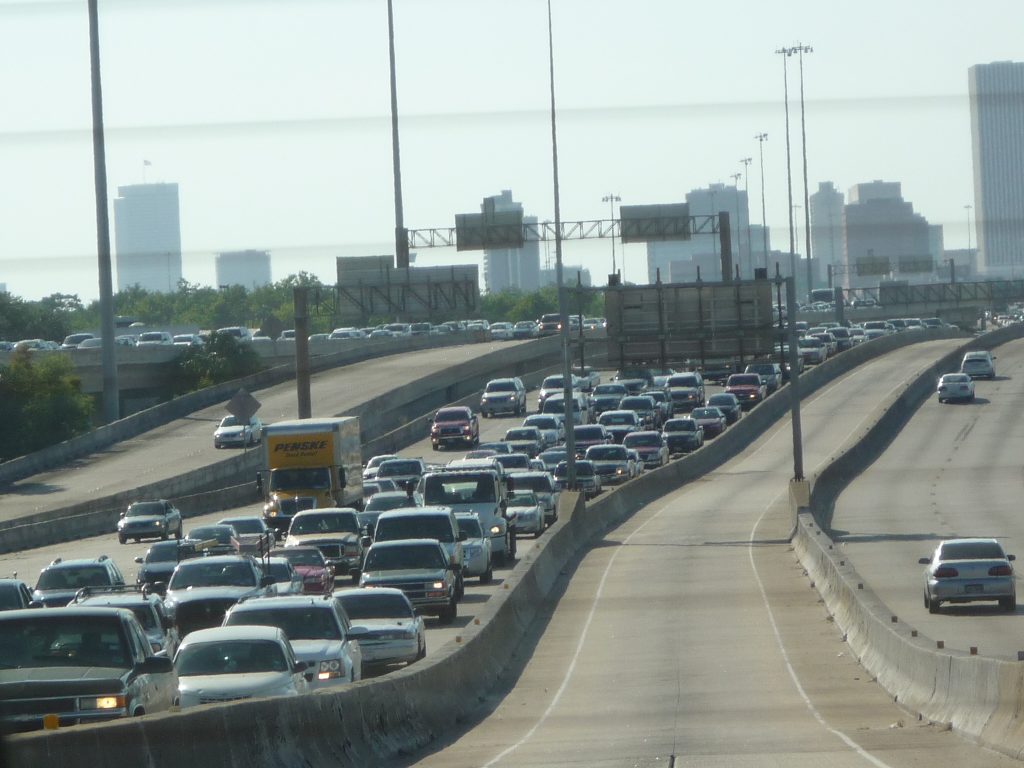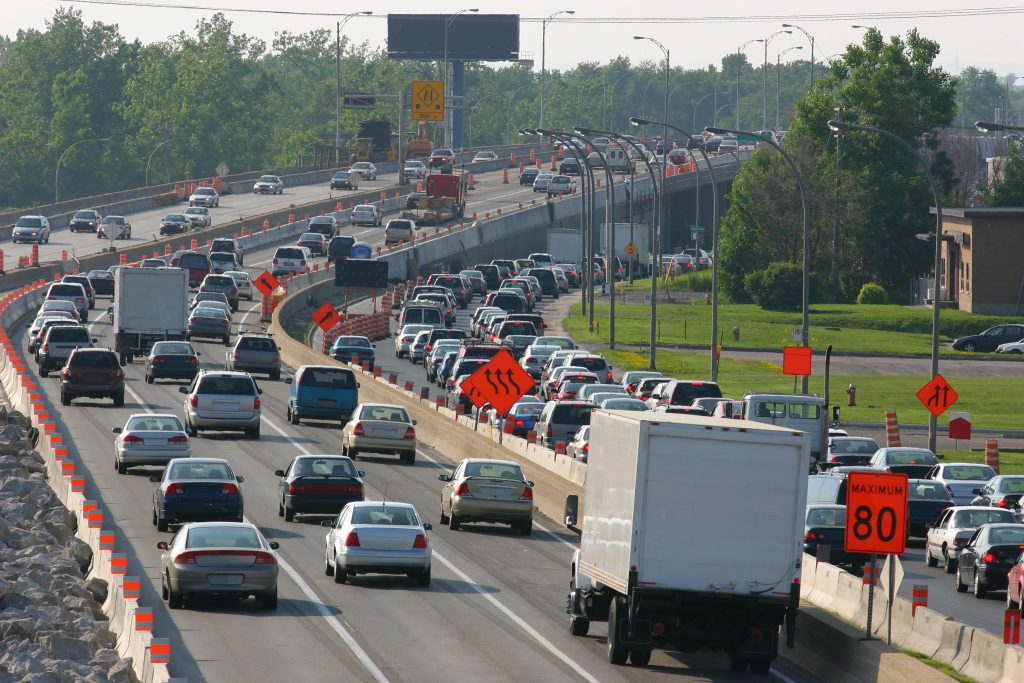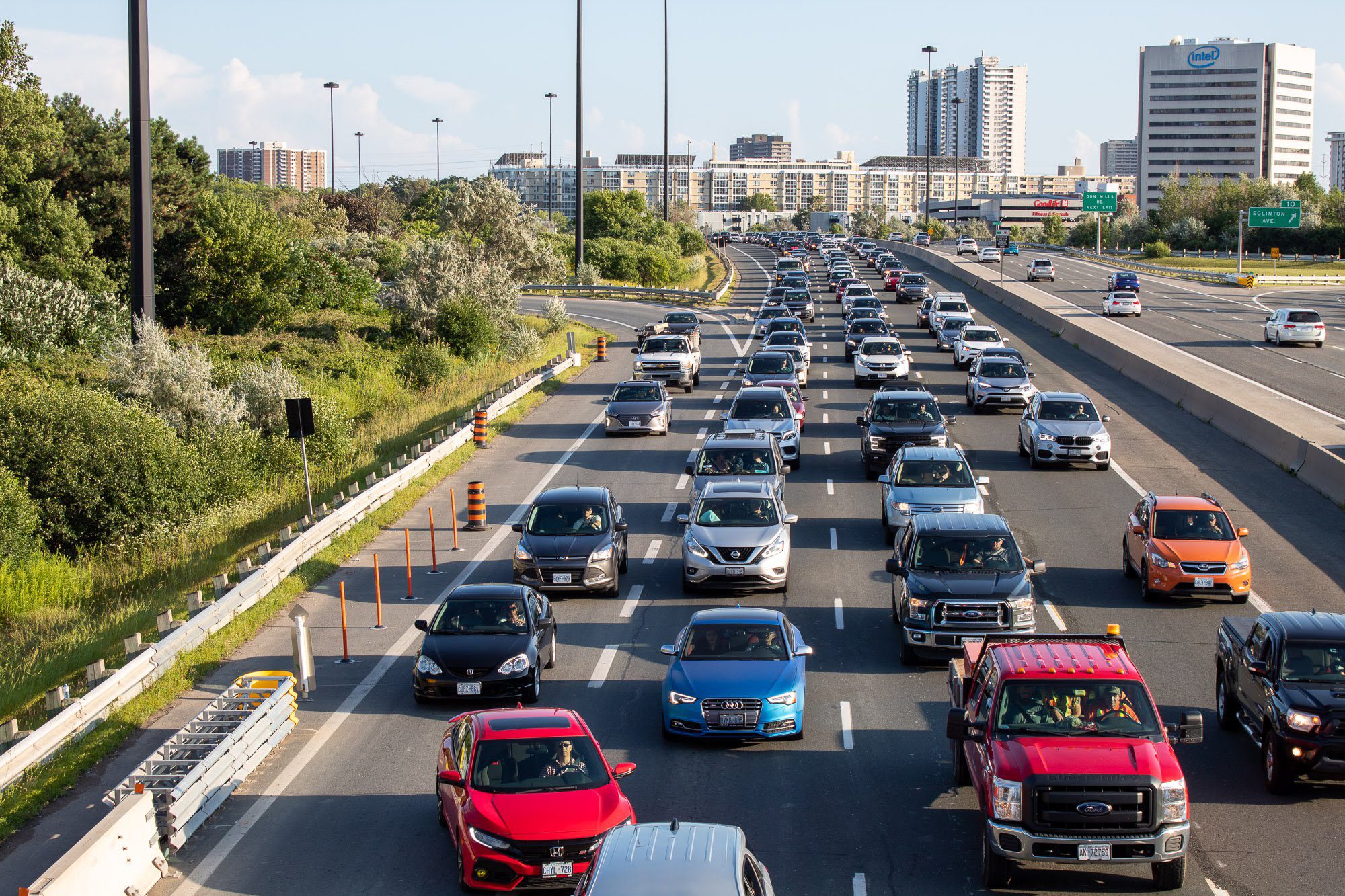Think back to the last time you were stuck in traffic on a highway. Did you imagine how much faster you could go with a whole new lane, or with a completely new highway, magically free of cars? It’s understandable to think this would help. But according to mounting evidence, adding more road space doesn’t speed up traffic. It does, however, create air pollution, greenhouse gas emissions, and a whole lot of paved surfaces where there was once green space, wetlands, forests and farmland. When you look at the facts, the decision to build new highways is a very destructive illusion.
TAKE ACTION: Tell Ontario to cancel the unnecessary and destructive Highway 413
The reason for this is simple: if you build more highway space, more people who aren’t currently commuting by car will decide to drive. This open space fills up quickly and we’re right back to traffic crawling along at a mind-numbingly slow pace. This phenomenon, known as “induced demand,” has been proven to happen over and over again. Numerous studies have examined the evidence and concluded that adding road capacity fails to address congestion because it adds new drivers to the road and increases the overall distance driven.

The Katy Freeway in Houston is a textbook example of induced demand. The mega-highway was widened in 2011 at a cost of almost $3 billion dollars, and guess what happened? Traffic got worse. Houston’s own traffic data showed that travel times actually increased during morning and evening commutes by 30 per cent and 55 per cent respectively.
The evidence at hand provides extremely compelling reasons to halt plans to build costly new highways like Ontario’s proposed Highway 413 and, instead, examine alternatives that will offer more lasting relief and better value. Yet decision makers in transportation departments across North America are still widening and building new highways as a solution to congestion. Why stick to this outdated approach to planning?
The answer could be rooted more in politics than traffic planning. New highways are often popular with commuters who keep hoping that someday their commute won’t be so painful. It’s understandable to think that adding more road space would offer relief, even if the evidence doesn’t actually support this. But it’s irresponsible of governments to play on this very real frustration to get buy-in for something that won’t, in fact, offer any lasting change except the loss of sensitive green spaces and worsening pollution. Add to this the massive costs to taxpayers, often in the billions, and the case for more highways fades quickly.
 Ontario’s own expert advisory panel determined that the proposed Highway 413 would only save the average commuter 30 seconds per trip – and this was without a robust consideration of induced demand. They also noted that “if objectives such as curbing congestion, supporting complete communities or reducing greenhouse gas emissions are important in the GGH, the potential for induced demand to undermine these objectives needs to be better understood.” Clearly it’s not worth spending an estimated $6 billion dollars to save 30 seconds. It’s definitely not worth spending $6 billion dollars to watch this 30 second time savings evaporate over time.
Ontario’s own expert advisory panel determined that the proposed Highway 413 would only save the average commuter 30 seconds per trip – and this was without a robust consideration of induced demand. They also noted that “if objectives such as curbing congestion, supporting complete communities or reducing greenhouse gas emissions are important in the GGH, the potential for induced demand to undermine these objectives needs to be better understood.” Clearly it’s not worth spending an estimated $6 billion dollars to save 30 seconds. It’s definitely not worth spending $6 billion dollars to watch this 30 second time savings evaporate over time.
There are also many ways to speed up existing highways without building or expanding roads, including:
- Adding HOV or carpool lanes, encouraging a shift away from single-occupant vehicles
- Redirecting truck traffic to underused toll routes like Highway 407
- Improving and expanding public transit to pull more commuters out of cars
- Shifting those who can work from home away from commuting at all, freeing up the roads for those who need them most
- Building safe walking and cycling options for shorter trips within the community
Instead of falling back on outdated solutions to congestion, let’s stop and ask an honest question: how can we get people where they need to go in ways that are best for both people and the planet? When you look at the evidence, the answer probably won’t involve building a highway.
Tell Ontario to cancel Highway 413
Stay up-to-date on environmental issues. Join our email community.










